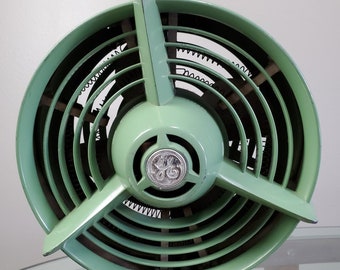- Dec 7, 2019 - Explore Ty Goldsmith's board 'Antique fan / lights', followed by 163 people on Pinterest. See more ideas about antique fans, fan lamp, lights.
- Our antique/vintage Fan Restoration Kit is perfect to spice-up and refurbish that old antique fan that needs some TLC. This Universal Vintage Fan Restoration Kit includes the following: One 8-foot piece of 18 Gauge, 2-Conductor, Cloth-Covered Twisted Wire in your choice of color.
It resembles the GE 'Vortalex' introduced in 1938 but this Quiet Blade model differs in that the struts are separate from the cage instead of being integral with the cage wires. The motors are also different in the way the cage mounts to the motor. Fan runs smoothly on all three speeds and oscillates as it should.
The electric fan was invented in the 1880s in the sweltering heat of the New Orleans summer.
Over the years the design was adapted and tweaked, with the first recognisably modern electric fans being produced in the 1920s.

They’re popular retro collectors items.
3d boat design software free. Here’s how to identify one.
Brand and model

Most electric fans will have a brand name displayed prominently in the centre of the cage.
This will immediately offer a clue as to its value, as certain “prestige” names are highly sought after.
Examples include Veritys, which regularly sell for several thousand dollars.
The model's issue number will tell you exactly when it was made and give you an idea of its value. Connect mac to microsoft surface hub. Benefits of recycling.
You can check it on eBay or try the Antique Fan Collectors Association (AFCA) forums.
Size and shape

Up until the 1910s, most fans were large and unwieldy things designed for use in office spaces.
After 1910 the technology had advanced to the stage where fans were small and cheap enough to go in the home.
Materials
Prior to the first world war brass was the dominant material used in making cages.
However, manufacturers were forced to switch to steel as global reserves were co-opted for the war effort.
After the war most never switched back.
Colour

Initially fans were mainly produced in a stark black, with the notable exception of General Electric – which used green.
As fans became more widely available, designers began experimenting with different colours. So colour is a good indicator that your fan was produced from the 1930s onwards.
Keep an eye out for…
The Emerson Silver Swan: This 1930s design classic sells around the $300 mark in good condition.
Veritys Junior Orbit: If you have one of these in good condition, you’re looking at around $2,500.
Ge Vortalex Fan Identification Number Chart Printable
General Electric: General Electric fans sell for anything from $60 to $1,000.



